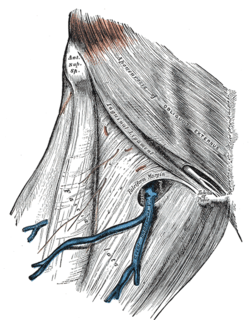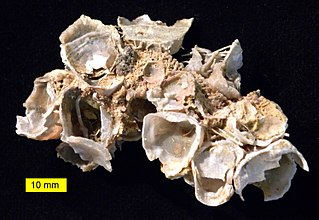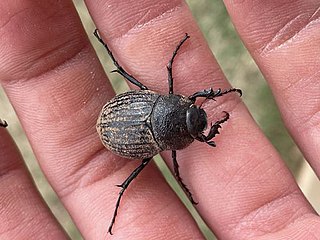Related Research Articles

In mammalian anatomy, the cribriform plate, horizontal lamina or lamina cribrosa is part of the ethmoid bone. It is received into the ethmoidal notch of the frontal bone and roofs in the nasal cavities. It supports the olfactory bulb, and is perforated by olfactory foramina for the passage of the olfactory nerves to the roof of the nasal cavity to convey smell to the brain. The foramina at the medial part of the groove allow the passage of the nerves to the upper part of the nasal septum while the foramina at the lateral part transmit the nerves to the superior nasal concha.
Lamina may refer to:

The petrous part of the temporal bone is pyramid-shaped and is wedged in at the base of the skull between the sphenoid and occipital bones. Directed medially, forward, and a little upward, it presents a base, an apex, three surfaces, and three angles, and houses in its interior, the components of the inner ear. The petrous portion is among the most basal elements of the skull and forms part of the endocranium. Petrous comes from the Latin word petrosus, meaning "stone-like, hard". It is one of the densest bones in the body.

In the temporal bone, in the portion beneath the falciform crest are three sets of foramina; one group, just below the posterior part of the crest, situated in the area cribrosa media, consists of several small openings for the nerves to the saccule; below and behind this area is the foramen singulare, or opening for the nerve to the posterior semicircular canal.

The superficial epigastric artery arises from the front of the femoral artery about 1 cm below the inguinal ligament, and, passing through the femoral sheath and the fascia cribrosa, turns upward in front of the inguinal ligament, and ascends between the two layers of the superficial fascia of the abdominal wall nearly as far as the umbilicus.
Cribriform can refer to:

The superficial external pudendal artery is one of the three pudendal arteries. It arises from the medial side of the femoral artery, close to the superficial epigastric artery and superficial iliac circumflex artery.

The cribriform fascia, fascia cribrosa also Hesselbach's fascia is the portion of fascia covering the saphenous opening in the thigh. It is perforated by the great saphenous vein and by numerous blood and lymphatic vessels..

The vestibule is the central part of the bony labyrinth in the inner ear, and is situated medial to the eardrum, behind the cochlea, and in front of the three semicircular canals.

In anatomy, the saphenous opening is an oval opening in the upper mid part of the fascia lata of the thigh. It lies 3–4 cm below and lateral to the pubic tubercle and is about 3 cm long and 1.5 cm wide.
Lamina cribrosa may refer to:
The nerve fibers forming the optic nerve exit the eye posteriorly through a hole in the sclera that is occupied by a mesh-like structure called the lamina cribrosa. It is formed by a multilayered network of collagen fibers that insert into the scleral canal wall. The nerve fibers that comprise the optic nerve run through pores formed by these collagen beams. In humans, a central retinal artery is located slightly off-center in nasal direction.

Hercosestria is an extinct genus of brachiopods from the Lower and Middle Permian. They were important reef-forming organisms because of their conical shapes, attaching spines, and gregarious habits. It is related to Richthofenia. Species of the genus have been found in Texas and Guatemala.
Pseudeuclea is a genus of longhorn beetles of the subfamily Lamiinae, containing the following species:

Dendrophyllia is a genus of stony cup corals in the family Dendrophylliidae. Members of this genus are found at depths down to about 900 metres (3,000 ft). They are azooxanthellate corals, meaning that they do not contain symbiotic photosynthetic dinoflagellates as do many species of coral.
Pseudeuclea roseolata is a species of beetle in the family Cerambycidae. It was described by Stephan von Breuning in 1961.

Pseudodoliops elegans is a species of beetle in the family Cerambycidae. It was described by Heller in 1916, originally under the genus Diatylus.
Pseudodoliops griseus is a species of beetle in the family Cerambycidae. It was described by Stephan von Breuning in 1938. It is known from the Philippines.
Pseudomiccolamia pulchra is a species of beetle in the family Cerambycidae. It was described by Maurice Pic in 1916.

Phyllophaga cribrosa is a species of scarab beetle in the family Scarabaeidae. It is found in Central America and North America.
References
- ↑ BioLib.cz - Pseudeuclea cribrosa. Retrieved on 8 September 2014.